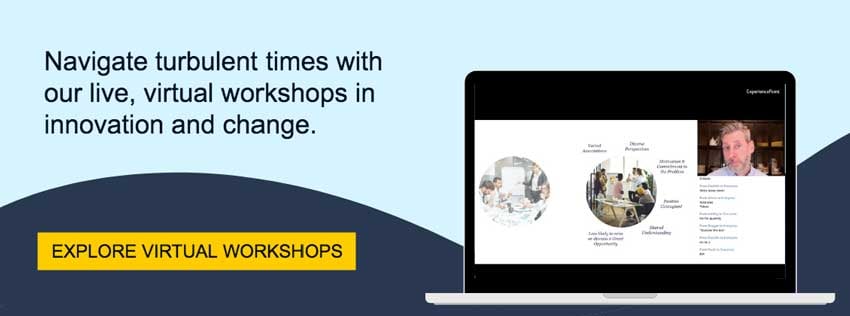Virtual project teams may never meet in person, but that doesn’t mean they can’t collaborate and innovate as effectively as on-site ones. They just need tools that create a seamless collaborative experience.
Design thinking relies on the interaction of differing perspectives to develop the creative friction necessary to leap into new domains — and that can’t be achieved on a buzzy conference line where people have to take turns talking and stay close to the speaker to be heard. Remote teams working with remote tools can achieve significant ends — but it requires technology platforms that enable that visual thinking and cross-marination of ideas.
This may require a combination of tools and platforms that support different aspects of the collaboration and idea-sharing process. Here are some favorites:
Specifically designed for virtual teams, this collaboration hub lets teams create virtual workspaces and channels where they can have ongoing conversations, share files, and set notifications to remind teammates when work is due. It can also link to Dropbox and Google Drive for greater data storage.
This virtual whiteboard provides small teams with a surprisingly flexible visual space where they can draw pictures, write notes, and share different types of media as part of the brainstorming process. It’s a great complement to the creative process.
Skype is an inexpensive and easy way to video conference and collaborate. A free download and camera-enabled computer or smart phone can bring two people together in real-time, and an upgrade to Skype for Business can put everyone on the team, on the screen. The latter also allows users to record meetings, share their screen, annotate PowerPoint presentations, and have side message conversations.
Another free virtual team platform, Google Hangouts also lets teams have live video calls, share screens and collaborate in real-time via Google Docs. Because the number of participants on any one call is limited, this is better for small teams, or casual connections. (Note: we also love Google Docs as a way to quickly share and update written content).
Every team needs a good project management tool, and there are lots of free and low-cost options to choose from. We like Quire because it is designed for creative teams, and provides tools that help teams generate big ideas that break them into chunks and assign them as tasks to the team. We also like the visual tree structure for tasks, and the way it lets teams prioritize tasks however they please.
Even the best technology won’t help teams thrive unless they use them effectively and with specific goals in mind. Design thinking reminds remote teams that technological tools are not the end, they merely facilitate the inquiry from which the ends are manufactured and created.
